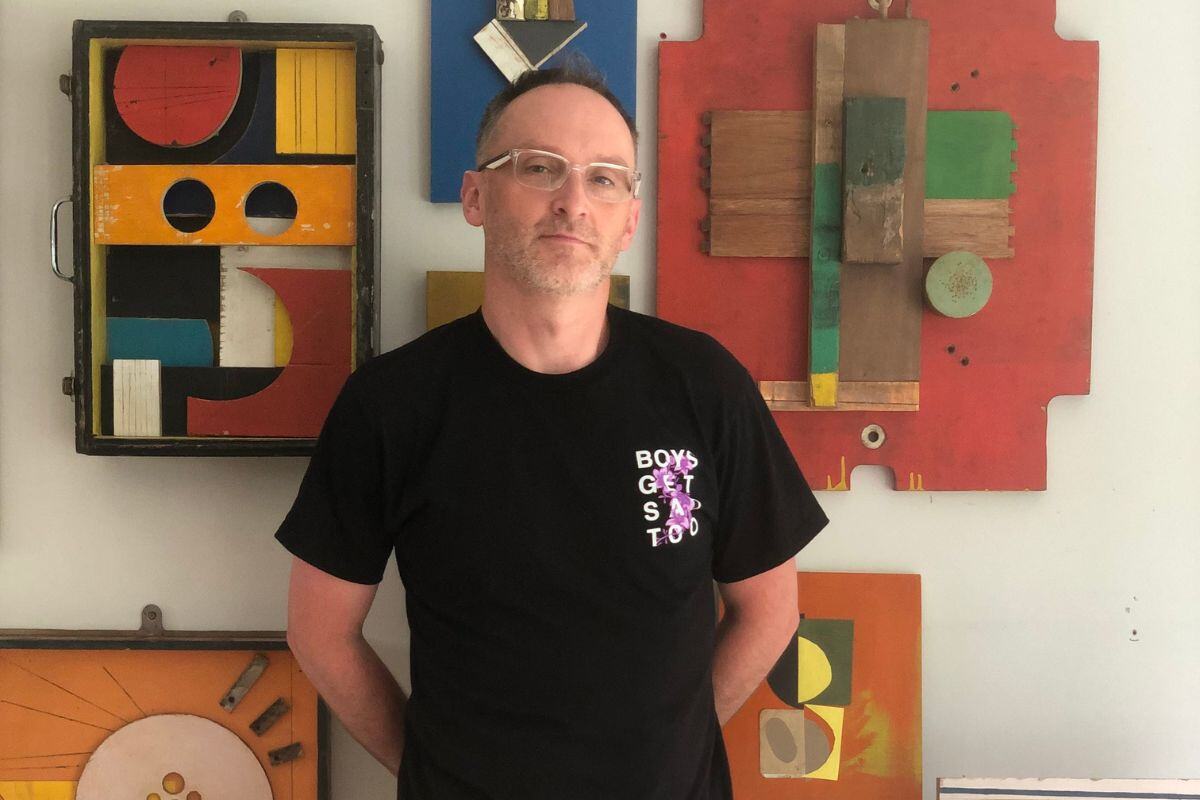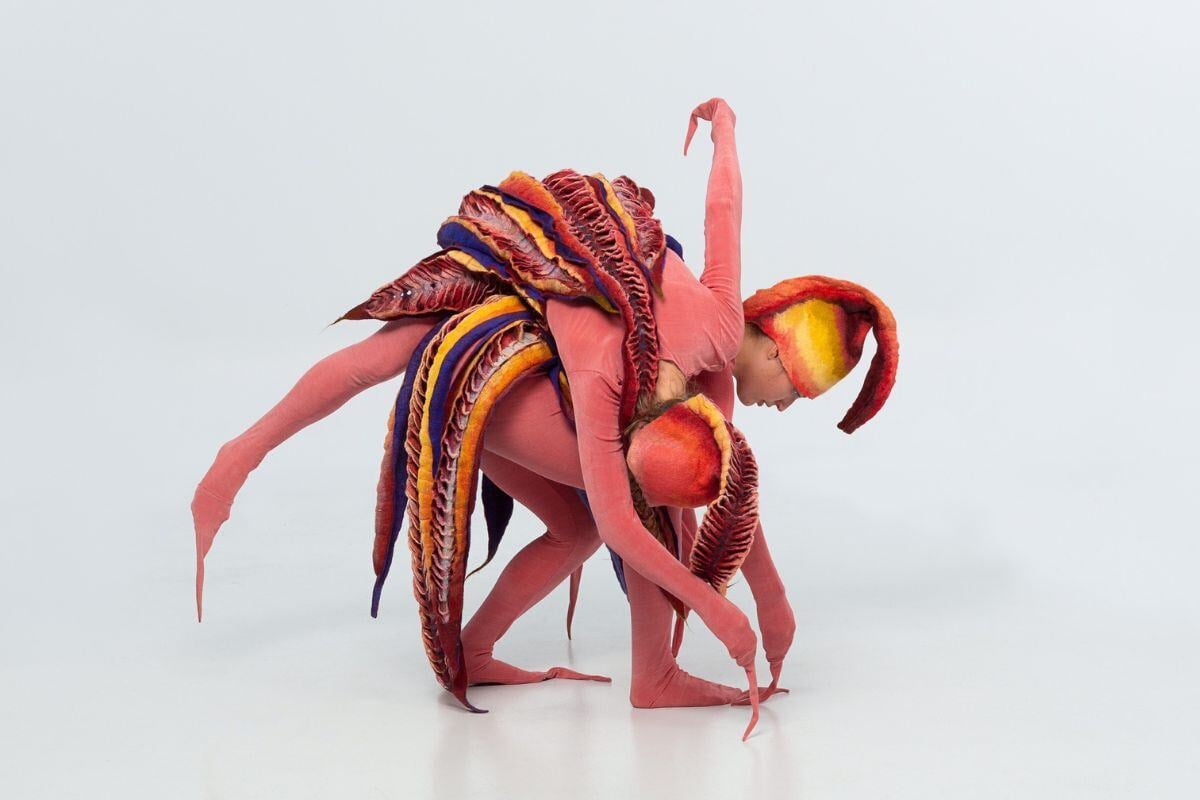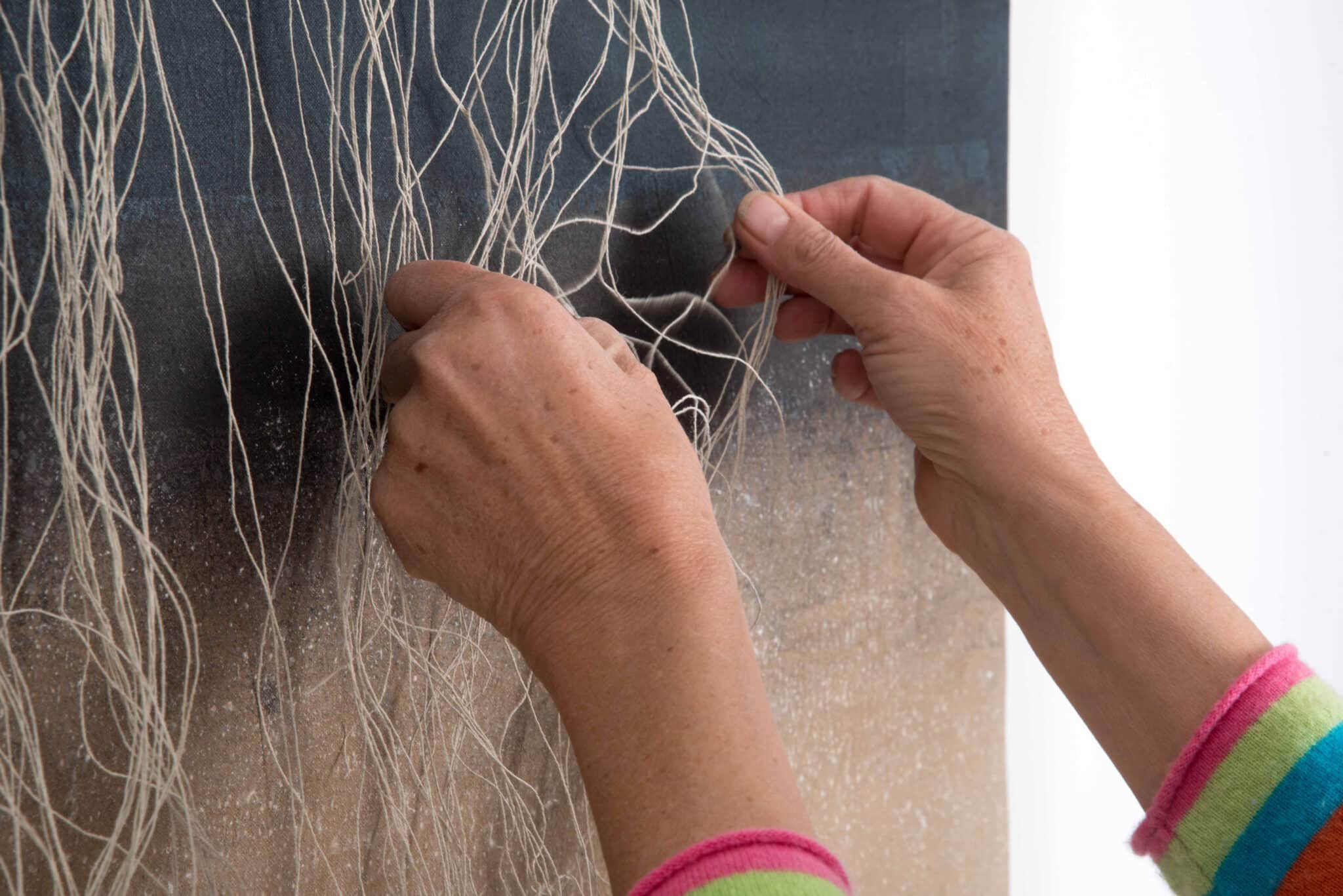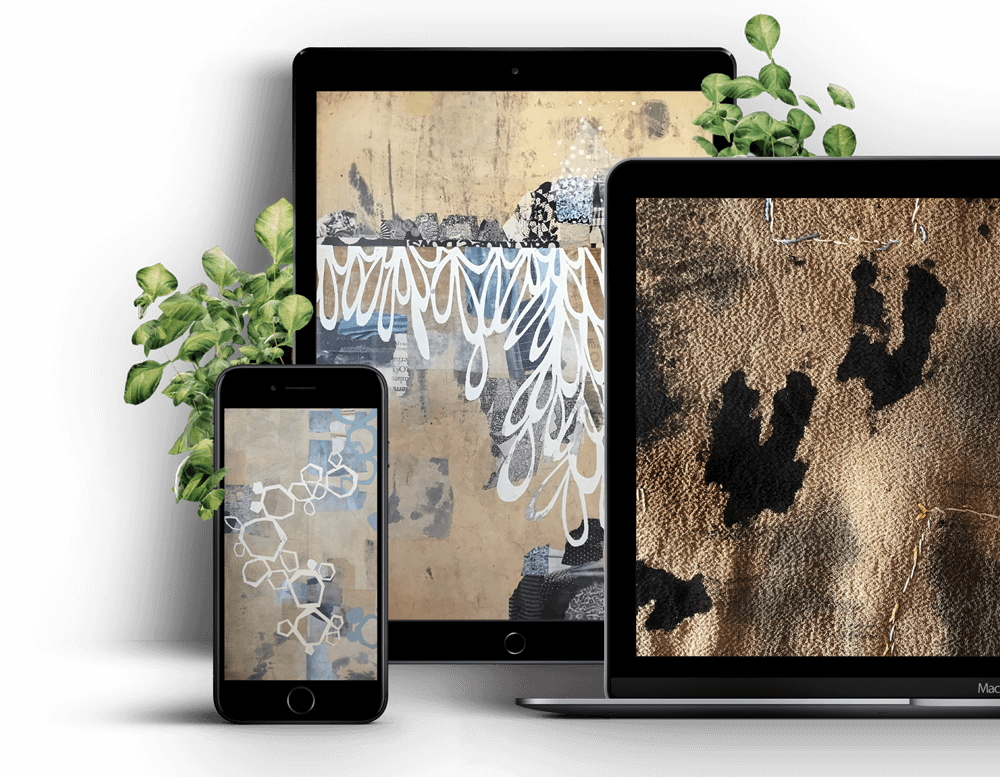Julie Williams: Visual Vocabular
Fibre Arts Take Two loved exploring a different artistic sphere with calligrapher Julie Williams, discussing her passion for the hand-written word.
Julie Williams’s Friday Feature Artist Interview can be found at the bottom of this page.
Julie Williams is a master of visual vocabulary, a master calligrapher, a lettering artist, a painter, and a creator of artists’ books whose craft spans over four decades with a quill dipped in history and a palette rich in heritage.
Julie’s artistry is born through time and memory, etching stories of places and the essence of belonging into every surface. Her bespoke calligraphy has graced corporate events and private commissions. While her exhibition artworks have found homes in regional galleries across Australia, Julie’s commitment to the craft saw her undertake intensive studies in the 1990s, perfecting the age-old traditions of calligraphy. Her quest for knowledge didn’t stop there. She has learned from world-renowned masters and delved into various art forms, from bookbinding to the intricate dance of Turkish marbling.
Fibre Arts Take Two loved delving into a different artistic sphere with Julie, discussing her passion for the hand-written word.
A different path
When she left school, Julie had ambitions towards graphic design or advertising, but fate had another path in mind.
“We moved from Victoria to Sydney,” she says, “and I missed the boat joining in university enrollment. I ended up getting a job and discovered that there was a showcard and ticket writing course at my local technical and further education centre very close to where I worked. A friend of mine’s mother was a showcard ticket writer, so I knew little about it and thought, ‘Oh, that’ll keep me busy for a year before I enrol in uni.’ I did not enrol in uni; I fell in love with showcard and ticket writing and got a job doing that.”

Showcard and ticket writing
Showcards and ticket writing originated before computers and cheap printing were widely available. “So way back when,” explains Julie, “it was costly to print a one-off for or a few off of things. So, signs used to be done by hand. It’s very similar to SignWriting in that it’s a kind of advertising but hand-done advertising.
Back in the 70s, it was just the way things were done. About halfway through my TAFE course, I got a job as a ticket writer. I was working for shopping centres advertising their weekly entertainment. I was doing storyboards for advertising agencies because it was quicker for somebody to do it by hand and change things up quite quickly compared to printing it out. There was a lot of workaround for ticket writers in those days.”
Calligraphy
After showcard and ticket writing came Julie’s next great passion, calligraphy. “Eventually, I ended up being asked to become a teacher at TAFE of showcard and ticket writing,” says Julie, “Calligraphy started from there. I was also asked to teach calligraphy classes, not knowing much about calligraphy at that stage, but devouring any book I could get my hands on. I’ve just been so lucky that it’s something I’ve really loved and, you know, have a real passion for because I love the written word. And I love art, and somehow or other, it’s just evolved that my life has been as a calligrapher. “
Calligraphy was an excellent fit for Julie, “I’ve always loved art,” she says, “I’ve always loved writing; I was one of those kids at school that paid a lot of attention to how I presented assignments, the cover page was always the most important thing. I always wanted it to look lovely and took a lot of care with writing and doing illustrations and things with it. It’s just something I think you have inside you, and calligraphy found me, and I found that it was the perfect thing that I could do watercolour illustrations with and learn many new skills.”

Learning calligraphy
Julie says she was very fortunate in the calligraphic training she received in the 1990s,
“There was a fabulous course here in Sydney,” she says, “and we learnt everything from pictograms to modern-day graffiti and the history of lettering. We studied lots and lots of different hands and scripts and the decorative elements that came with them. So having all those traditional scripts stands you in excellent stead, to the rigours of what is involved in being a commercial and professional calligrapher and working to create important documents which need to be handwritten, rather than just printed out.”
Julie says this training has proved invaluable, “Having had the training in traditional calligraphy,” she says, “and what makes good letters or better letters, what makes them more appealing, what makes them click together and balance each other out and suit the piece of work that you’re working on, is a good foundation for breaking the rules later on. So having that knowledge and knowing how far you can take letters, and when something isn’t quite working the way you want it to looking at it quite carefully, and knowing what to look for, and how to correct that and make it more palatable or fit the purpose a little bit more. It’s a precious skill to have. So from that, that, you know, early work and studying scripts, historical scripts so carefully, it’s freeing to be able to say then, ‘Okay, I can now head this direction, and I can make my letters dance a little bit more or have more life or be legible or not be legible, and still look good.’”
Getting into calligraphy
According to Julie, everyone has handwriting skills, “One of the things that is limiting with that, though,” she says, “is that those tools that we’re all very used to have limited capabilities as far as the line that they produce. It’s usually quite thin and monoline and may not be particularly enticing to read. Learning how to use different tools in more of a calligraphic way will make handwriting sing. That’s a perfect place to start learning. Choice in how you want to approach putting lettering into artwork is a wonderful place to start. You don’t necessarily have to learn about alphabets, but in saying that, it’s also very valuable to learn how letters work together and have a gel together.”
Julie is thrilled to share her love of calligraphy and encourages everyone to give it a go, “Calligraphy is one of those arts,” says Julie, “that a lot of people don’t know about, and it brings such great rewards. As a calligrapher, I’ve met many beautiful people worldwide and enjoyed many allied arts and calligraphy societies worldwide. It’s a great place to start if you want to learn more about lettering. Calligraphy societies are very welcoming, as little or as much as you know. I hope I’ve encouraged people to think about the words they love and maybe pop them into their art practice.”

About the artist
Julie Williams is a calligrapher, lettering artist, painter and maker of artists’ books.
Julie’s work as an artist connects her journeys of history and belonging and memories and places.
Join Our Newsletter
OUR YOUTUBE CHANNEL
View our interviews and more on our Youtube channel!
OUR FACEBOOK GROUP
Join our Community and stay updated with our upcoming announcements!




